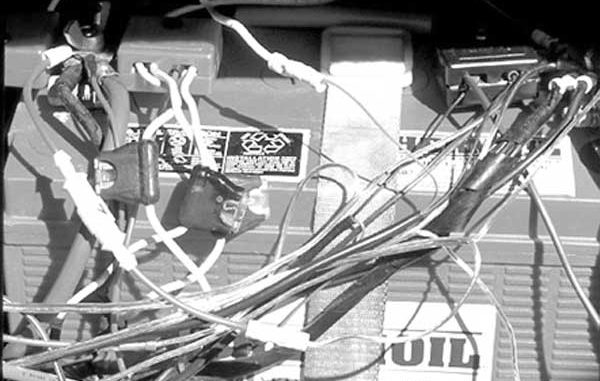
If locating transition trout has got you down, put your bay boat to use by fishing the wells and pipes — and the cobia that hold on them — this September.
My fishing partner and I sat helplessly in my boat and watched as an old, partially restored cabin cruiser spewed orange fire and black smoke in a marina. Everyone got off the boat safely and a sheriff’s patrol craft pulled the burning boat clear of the boat stalls.
All efforts to extinguish the blaze failed, and deputies moved the crowd on shore and in boats a safe distance back until the fiberglass hull self-extinguished at the waterline. It took less than 30 minutes for the elegant old cruiser to become a raft of blackened fiberglass.
The boat’s owner had started his restoration with cosmetic improvements, then rebuilt the engine and fuel system. He said the boat’s wiring was a mess, and he was going to completely replace it. He was about to start when a catastrophic short saved him the trouble.
Every wire that carries power to an accessory should be protected from short circuits by a fuse or circuit breaker. The safety devices should be installed as close to the battery or power bus as possible so they can protect a wire’s entire length.
Today’s outboard engines come with a built-in bevy of fuses, but their main power cables are sometimes unprotected between the engine and the cranking battery. The proper fuse or circuit breaker rating for this connection depends upon the size of the wire and the engine’s electrical load.
Check with a qualified marine dealer or repair shop to find the right size for your motor’s main power lead. Also have them show you where all your engine fuses are located; you’ll probably be surprised at how well some are hidden. Get spares for every fuse you find.
Most marine electrical systems have a power bus. Sometimes it’s a fuse panel, but it may be nothing more than a non-conductive block containing a strip of positive connections and a single negative post.
These blocks are designed to let you power accessories from the positive posts, and they leave it up to you to attach an in-line fuse to each power wire. The fuse panels and power distribution blocks are powered by a wire connected to the engine’s cranking battery.
Most new boats have a circuit breaker protecting this wire, but the older your boat the more likely it is that the wire was connected without a fuse or circuit breaker.
It’s a good idea to add up the total amp draw of the accessories wired to your bus that may be run at one time and add an in-line fuse large enough to carry the load. Motorized accessories will draw a bit more power when they first start up, so look for a peak-load rating on a motor’s data label or add 20 percent to its stated amp rating. Install the fuse or breaker in the power panel’s feed wire as close as possible to the battery’s positive post.
Marine grade circuit breakers and fuse holders both provide good protection, but breakers are more convenient. It’s easier to push a button back in or flip a lever than it is to take a fuse-holder apart and replace its fuse, or discover that you don’t have a suitable spare fuse onboard.
The time to find out whether you have circuit breakers or fuses, where they are located and whether or not you have the proper spare fuses onboard is in the boat slip or on the trailer in your driveway. There’s no such thing as a convenient emergency.


